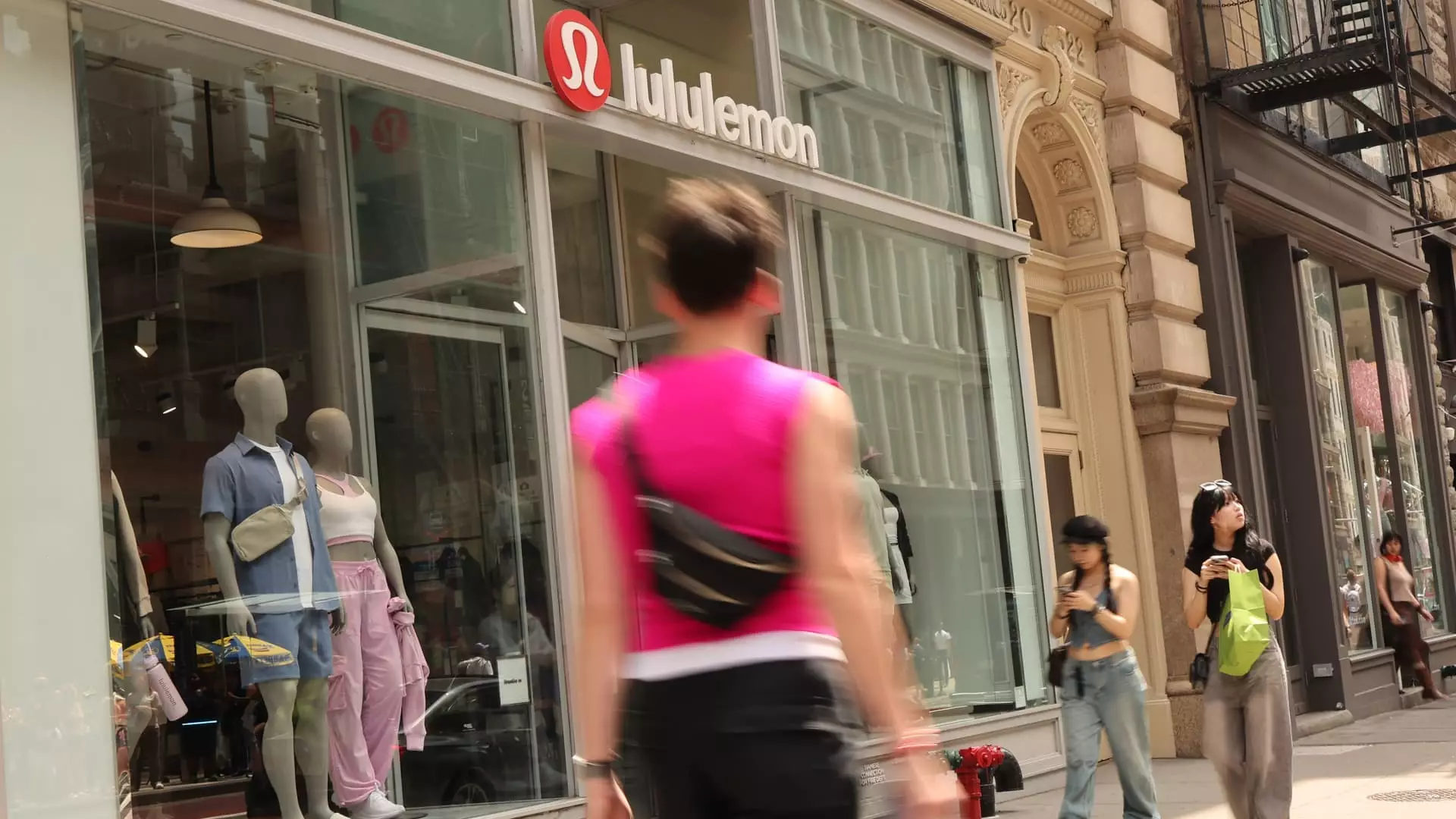Lululemon Athletica Inc. recently reported its fiscal first-quarter results, revealing a mixture of minor successes overshadowed by sobering challenges. The company exceeded Wall Street’s earnings per share (EPS) expectations with a reported $2.60 against a forecast of $2.58. However, this silver lining quickly faded as Lululemon introduced downward revisions to its full-year earnings guidance. The anticipated economic uncertainties spurred by tariffs and a contracting U.S. economy reflected a grim forecast, pushing the company’s shares down nearly 20% in after-hours trading.
Lululemon’s CEO, Calvin McDonald, stated, “we intend to leverage our strong financial position and competitive advantages to play offense,” but that rhetoric rings hollow amid a macroeconomic climate that punishes rather than rewards. As competitors like Abercrombie & Fitch and Macy’s have already slashed their guidance and raised prices, it raises questions about how Lululemon is planning to navigate such turbulent waters.
The Tariff Effect: A Dark Cloud Over Retail
The reality of today’s retail landscape is that the dark cloud of tariffs, particularly those introduced during the Trump administration, looms large. While Lululemon reported an increase in first-quarter revenue from $2.21 billion to $2.37 billion year-on-year, the profits tell a different story. The net income fell slightly from $321 million to $314 million while the company cut its full-year EPS guidance to a range of $14.58 to $14.78, down from an already optimistic forecast of $14.95 to $15.15.
It’s essential to recognize that Lululemon, along with other retailers, is caught in a trap of rising operational costs fueled by tariffs and dwindling consumer confidence. The expectation for second-quarter revenue sits between $2.54 billion and $2.56 billion—lower than analyst predictions of $2.56 billion. This gap should elicit concern among investors who value stability and steady growth.
Consumer Trends: A Reflection of Broader Discontent
The disarray in Lululemon’s sales trajectory is not merely an isolated event; it is emblematic of broader trends impacting the retail sector. Comparable sales grew by only 1% year-over-year when a more robust 3% was anticipated. This stagnation bears significant implications. In an era defined by rapidly changing consumer preferences and heightened price sensitivity, Lululemon must recalibrate its strategy to resonate with a consumer base increasingly wary of substantial retail price hikes.
Interestingly, while international sales increased by 6%, sales in the Americas—a primary market for Lululemon—decreased by 2%. Such a juxtaposition highlights the necessity for innovation and adaptation in local markets, which if ignored, could solidify the company’s trajectory toward diminished relevance.
Sustainability vs. Profitability: A Balancing Act
Adding to the discomfort is Lululemon’s lack of vertical integration; the company does not operate manufacturing facilities but instead relies on suppliers scattered across various countries, including Vietnam, Cambodia, and Sri Lanka. While this model can yield cost benefits, it also heightens vulnerabilities to external economic pressures like tariffs. The apparel industry needs to address sustainability concerns seriously. As consumer awareness grows regarding ethical production, brands like Lululemon ought to strike a balance between profit margins and responsible manufacturing.
The current financial outlook indicates that Lululemon is at a crossroads. If the company continues to overlook the importance of sustainable practices in its quest for profitability, it may alienate a growing demographic of eco-conscious consumers.
A Call to Action: Leadership at a Crossroads
In a world increasingly characterized by social and economic upheaval, Lululemon finds itself challenged to innovate or risk becoming obsolete. The introduction of higher prices as a response to tariffs has largely been viewed as anti-consumer in a retail landscape already rife with uncertainty.
As responsibility falls on leadership, Lululemon must harness its competitive advantages creatively, focusing not only on financial performance but also on consumer engagement and brand loyalty. Without decisive action, the company must brace itself for the possibility of worsening economic circumstances and an increasingly skeptical consumer base—an evolution that could very well determine its fate in the coming years.


Leave a Reply